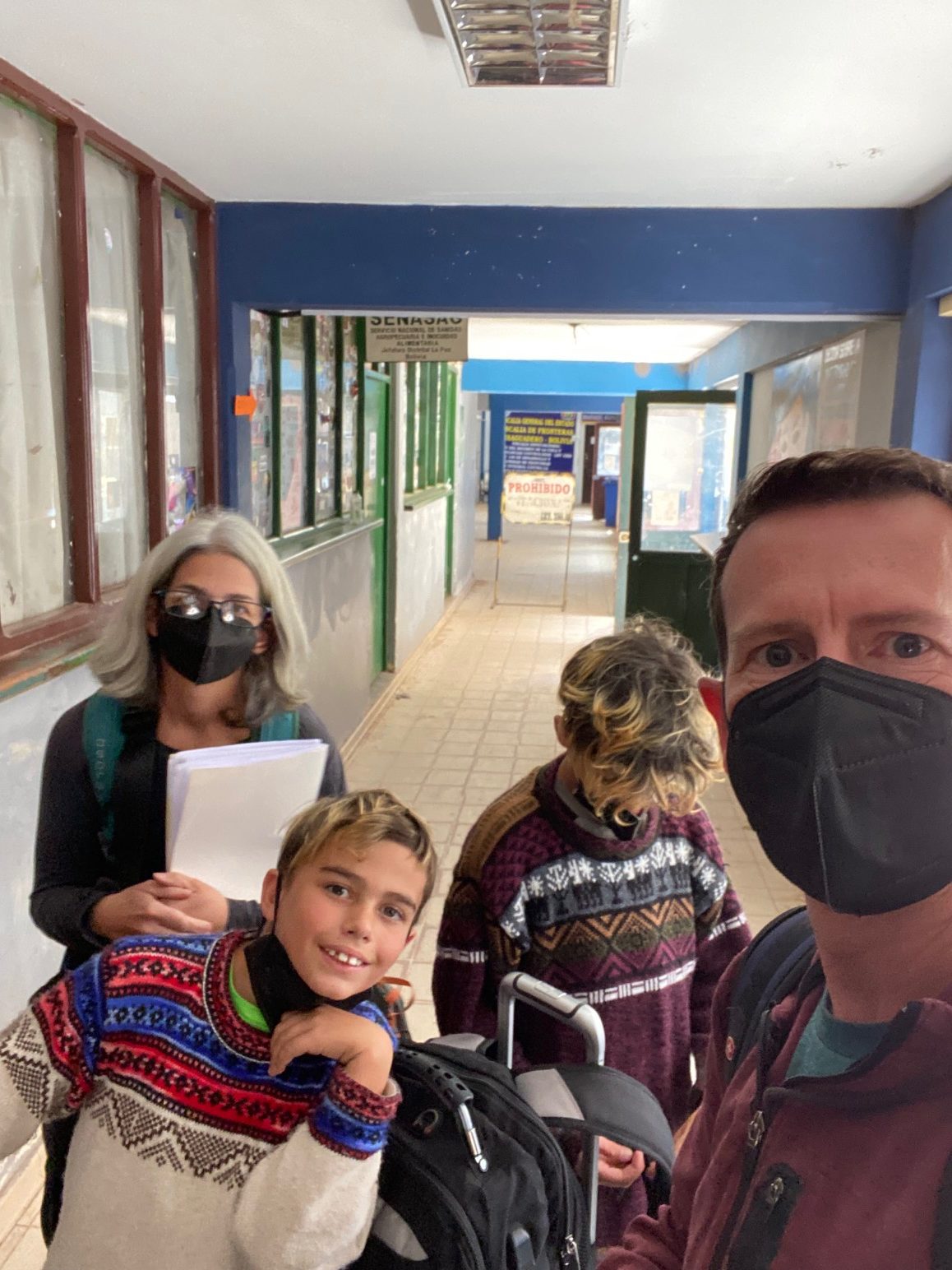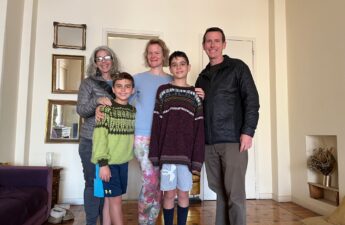We did not make any plans for Bolivia before heading there other than our first couple of nights at an Airbnb in La Paz. We were busy with my family visiting Cusco, Machu Picchu, and Lake Titicaca. We also had planning fatigue- it is real!
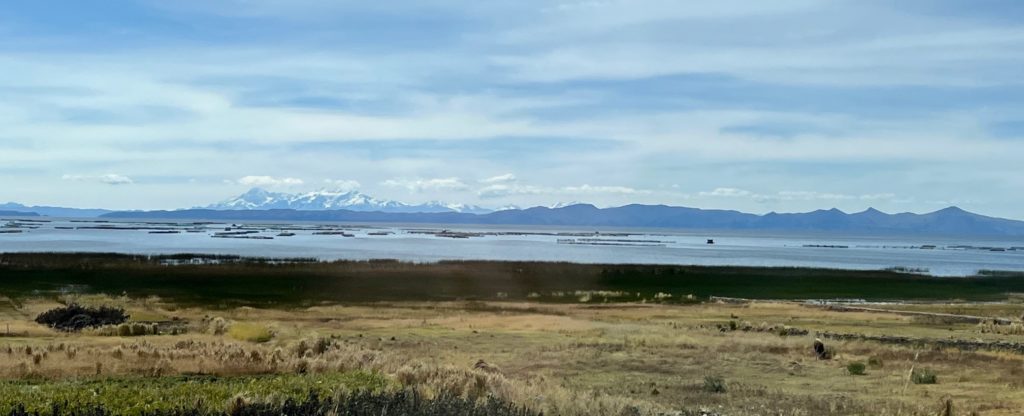
We spent an extra night in Puno before heading to Bolivia, so we would have time to print out documents and get our Covid test. Our bare-bones hostel in the city had spotty WiFi, but the room was clean, and it included breakfast.
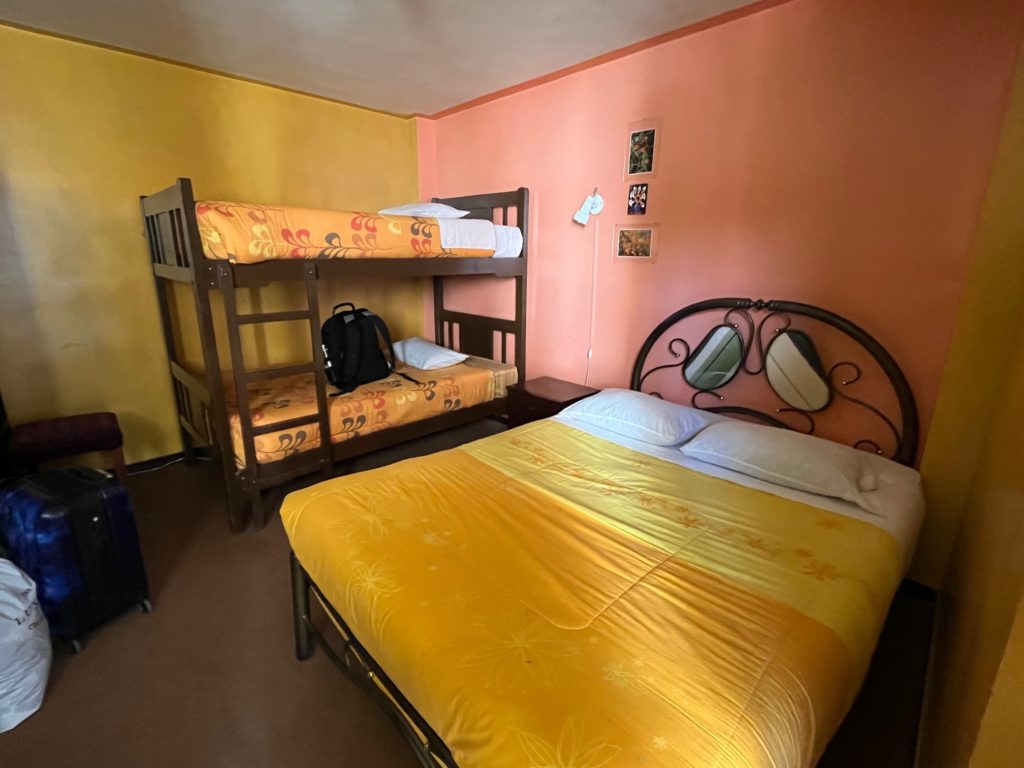
We took a taxi at 8:30 am from Puno to the border at Desaguadero. It cost about $50 more than a bus, but the bus would have taken about an hour longer with stops.
We arrived at the Peru border around 10:30 am. Exiting Peru took about 10 minutes. The immigration officer didn’t want to stamp our passports because we did not have our visas for Bolivia. We eventually communicated to her that we were getting the visas at the border.


We walked across the border to Bolivia and entered the immigration office. We got in line at 11:06 am and obtained our visas at 3:30 pm. It was not a smooth process. I looked up the requirements for entry into Bolivia, but I kept getting differing information.

We only waited about 20 minutes before being called into the office. We went over our paperwork with the immigration officer. We had copies of passports, negative PCR test results, proof of vaccination, health insurance, onward travel, bank account statement, and yellow fever vaccine.
We did not have color passport photos, the visa application (the website with the form was broken), or an itinerary (we did not have anything booked, but I guess we should have made one up).
The immigration officer told us we could not enter without pictures or the visa application form. We thought we could get the form at the immigration office and fill it out there since the website was broken, but no. It has to be filled out in advance and printed out.
We were told we could get photos outside of the immigration office, but there was nowhere to get passport photos on the Bolivian side. There were hardly any stores open in the town. After waking around on the Bolivian side for about 20 minutes, we walked back to Peru to look for a place to get pictures.

There was no place to get pictures on the Peru side either. We were panicking. Luckily, there was an internet copy shop. The copier was broken, but the computer and printer worked. We took pictures with an iPhone, emailed the pictures to the computer, and put them in PowerPoint. One problem solved. I also found the visa application on a program called PDF filler. I had to sign up for an account with a 30-day free trial. This whole process took about 2 hours.
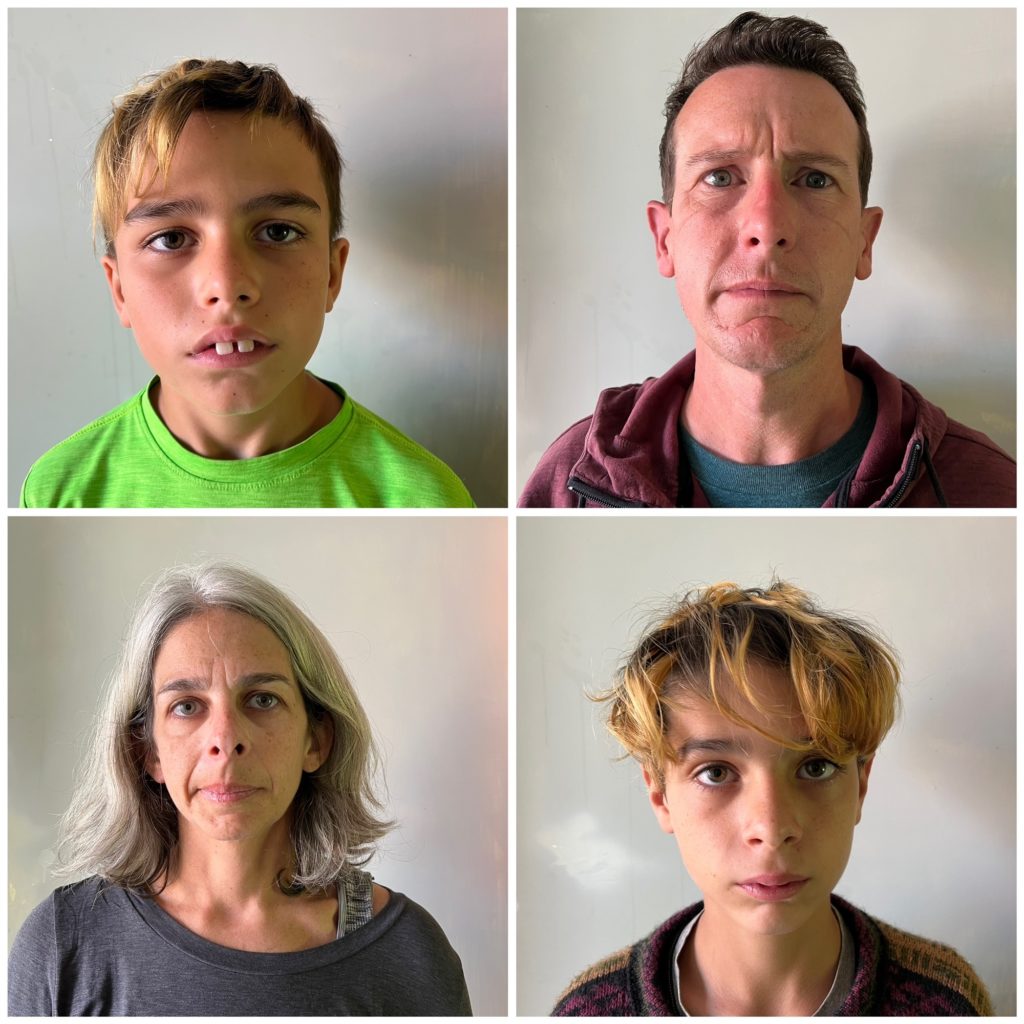
We walked back over to immigration with our photos and visa applications. We were rolling through the process when they asked about our itinerary. We told them we didn’t have one yet. The sign on the door with visa entry requirements stated that you either had to have an itinerary OR proof of exit from Bolivia. We had the latter. We pointed that out to the immigration officer, but he said that was a typo. He changed the o (or) to a y (and) with a pencil while he was talking to us. They wouldn’t let us write an itinerary out. They were going to make us go back to Peru to make up an itinerary to print out.
At that point, Michael was boiling mad. He told them that he heard Bolivia was a beautiful country, but they make it too hard to get in. After about 15 minutes of politely arguing with the immigration officers, they decided to waive the itinerary requirement and let us get the visa.
They didn’t examine any of the paperwork we handed over. They glued our picture to the top of the visa application with a glue stick. Then they took our picture with their camera and printed that picture out for our visa!
They asked us about a bank statement and yellow fever vaccine on our first attempt to enter, but it never came up on the second attempt.
We paid $160 per person for the visa and 25 dollars a piece for the Covid tests. Getting into Bolivia is not cheap. It was also not easy. Each immigration officer asks for different things depending on his mood and the day. The day we crossed, the immigration officer was a stickler.
We also had to register our hotel each day we were in Bolivia on a website or risk being fined on the way out of Bolivia.
The process to get into Bolivia is antiquated, and complicated, and it infuriated Michael. We did make it through, and that is what matters. As Americans, we have it easier than citizens of many other countries with most border entry requirements.
We exchanged money on the street with a guy sitting at a small desk. and then hopped on a collective van to La Paz. The van dropped us off in the dark in a bad part of town about 40 minutes from our Airbnb, but luckily we found a nice taxi driver who took us to our apartment. It was a long day, but we expect that on our travel days.


